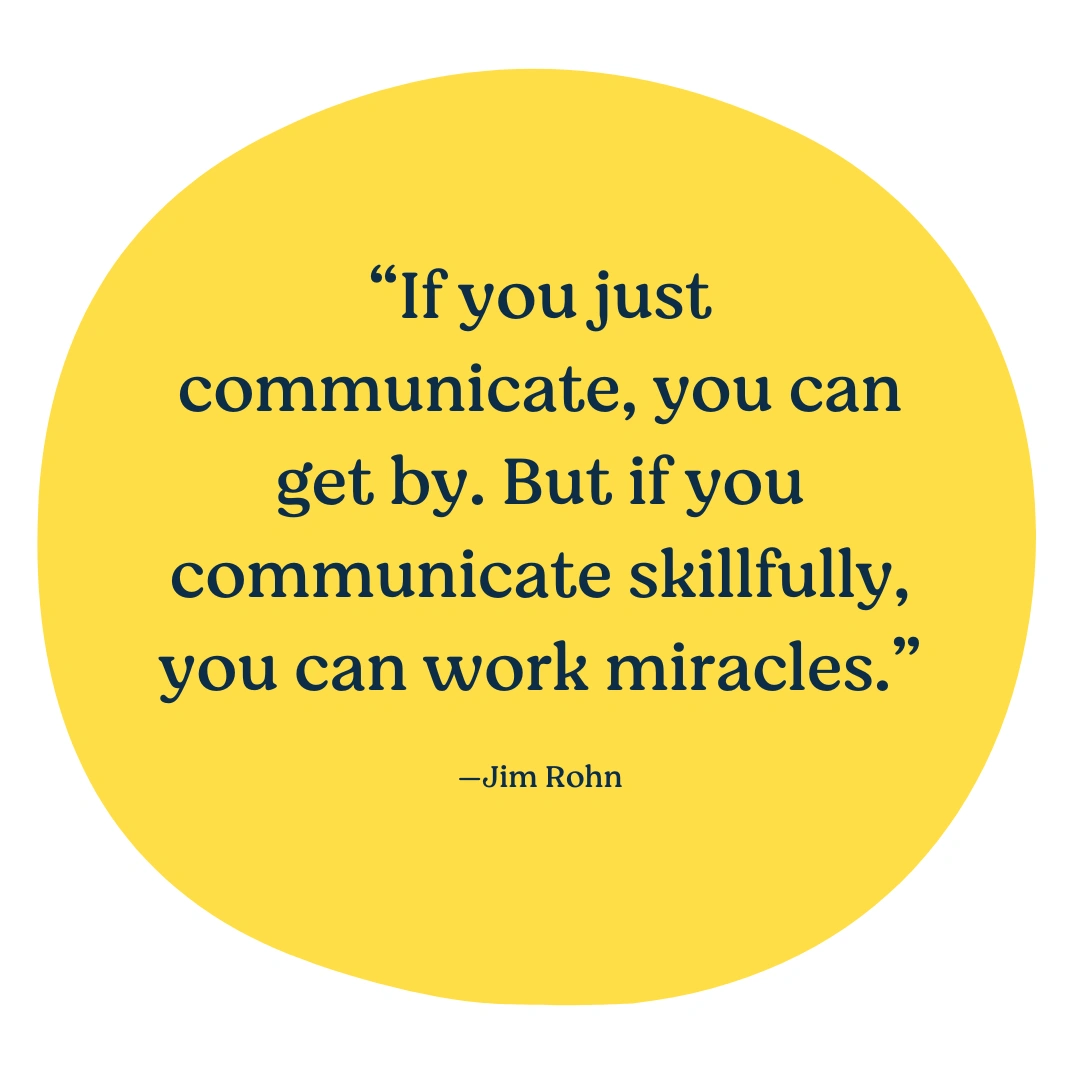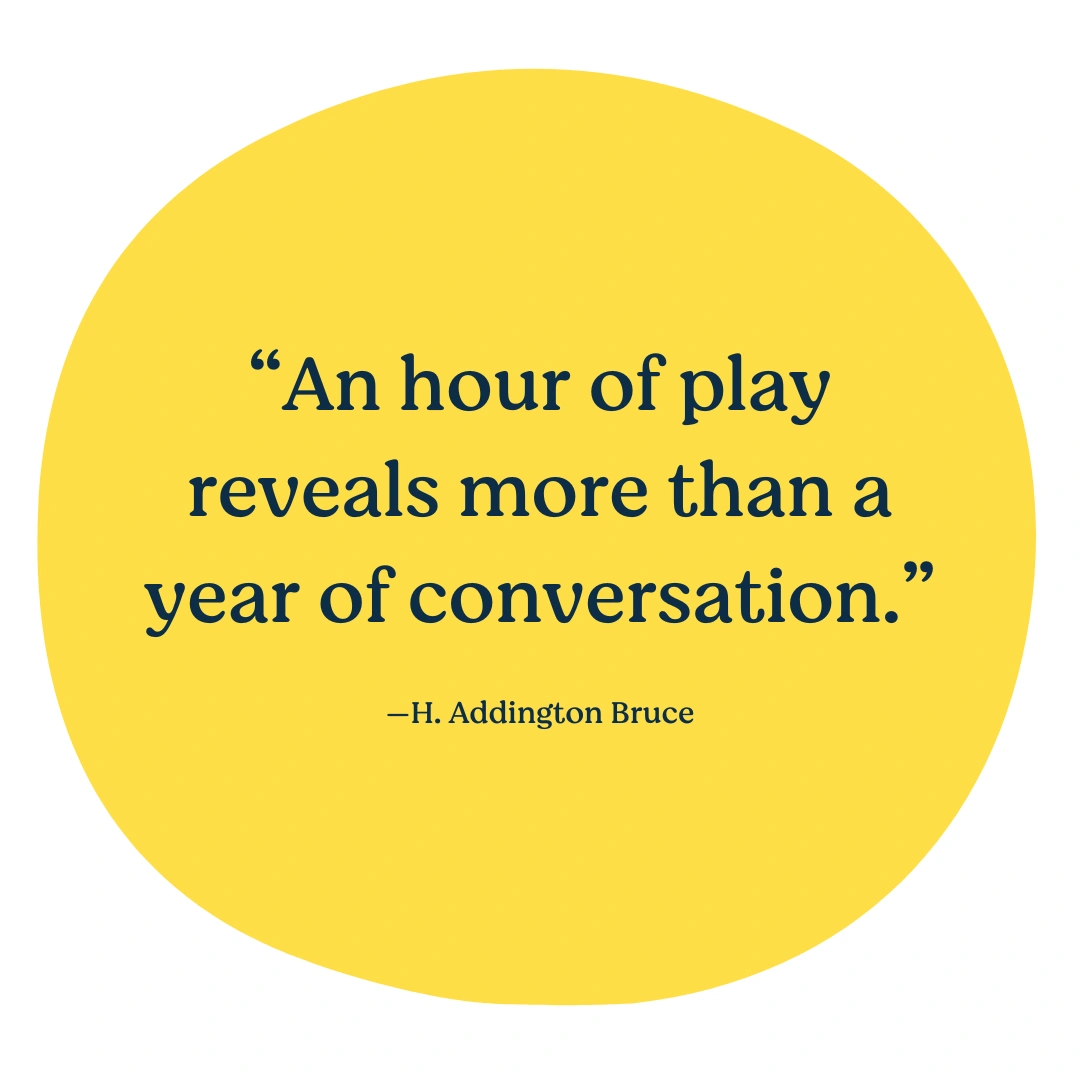Our kids will need to draw on a breadth of skills to navigate and thrive in the world, including elegant skills like problem solving, creativity and empathy. But, when you think about it, there is one set of skills that is so foundational it enables all of the others. What is that skill set? Communication.
The drive to communicate needs, ideas and feelings is innate, and the animal kingdom is filled with creatures who have developed amazing ways to communicate. We’ve even started to better understand how trees and fungus do it.
The First Lesson of Life
As they burst on the scene with a cry, kids begin the lifelong work of learning to communicate. It is literally job #1. Then, so much of childhood is spent on taking in, making sense of and learning to express ideas and feelings in communication with others.
The ability to communicate effectively also remains the key to so many things in life. We need to communicate to get our needs met, to refine our understanding of the world around us, to share our thinking, to engage others in our ideas and to make strong connections and relationships.
How Can We Help?
When you consider how incredibly important the ability to communicate really is, it can feel daunting to help the kids we love become effective communicators. And this is especially true given the added pressure in our culture for kids to read and write so early. As grown ups who long ago developed our own ways of communicating, it’s hard to remember or even imagine the symphony of skills that we leverage when we communicate.
The good news? The process is quite natural. And, if you can understand just a handful of the basics about how kids develop communication capacity, you can see opportunities to bolster those skills every single day. And, summer is full of opportunities to slow down, be present and offer kids the kind of play and practice that help build strong communication skills.
A Symphony of Skills
It made sense to me that communication requires the elegant coordination of many skills, but what that really meant for kids didn’t sink in until I saw this image.
McLachlan and Elks blew my mind by actually laying out the various things a human needs to do effectively in order to have a two-way conversation. As a grown up, these steps feel effortless. For little kids, each step is work. Imagine how much effort even the simplest conversation must take!
Check out this 3-minute video to get inspired, and likely to laugh a bit, about how different this chain is to grown ups vs. the kids we love.
How to Support The Developing Symphony
After you let this sink in, just knowing all that kids are working on when they are communicating can open up simple and powerful ways to support them.
A Little Empathy Goes a Long Way
Just remembering that listening, processing and expressing ideas is such a cognitive load for kids can make you a more empathetic listener. This is especially true in the meltdown moments, when young kids become really tough communicators!
Patience and Wait Time
Knowing that each link on the chat chain takes significant effort for a child helps us remember to slow down. Conversations are like a game of catch. Whenever you throw the “ball” to a child, give plenty of time, and then give a few seconds more for them to volley back.
And if your child does not not volley that ball back to you, it does not mean they are not working on their communication skills. It can help to know that the two types of language development that kids are working on—receptive and expressive—do not develop at the same pace. Kids are better able to receive and understand language (receptive language) than they are able to express themselves (expressive language) at any given point. Check out this fun 3-minute video to learn more about how these two types of language develop in young kids.
Listen Deeply
In addition to giving kids time, give them your full attention. Be present and use physical queues as much as you can. Mr. Rogers always got down to kids’ levels when he spoke to them. That simple action communicates volumes in a conversation. It says, I am here, I am ready and I am listening. It’s not practical to do this in every conversation, but when kids are particularly interested in something, give it a try!
Play, play, play!
Play gives kids wonderful practice in expressing ideas and communication is so much more than just verbal conversation. The more opportunities we give kids to direct their own play and to express themselves through art, music, creative movement and sensory activities, the more chances they have to develop communication skills.
Try Not to Interrupt a Kid at Play
Play is the essential work of childhood. And, we grown ups often love to talk with kids about what they are doing. In fact, it often feels like a super way to boost their communication skills. But, remember, chatting is a huge load, and an invitation to talk can interrupt kids' flow.
So, when kids are deep into play or exploration, try to discern whether or not they are “open” to talking before you initiate a conversation. For example, if explorers are ready to chat, they might:
- Engage you in talking first
- Look up when you are near and make eye contact
- Hand you an object
If kids do not show these types of signs and remain focused on play, we can still honor their play by:
- Sitting nearby and observing (They will sense you are there)
- Mirroring their play
- Saving the conversation for later when their attention shifts and they open up for conversation
Want more ideas about how to communicate with kids AND preserve their play focus? Check out our Knowing When to Talk is Not Child’s Play article.
Juicy Questions & Prompts
When we do talk to kids about their play, we can pose what we call "juicy questions" or questions that are open-ended and invite kids to elaborate and practice their expressive language skills. Next time you chat with your child about their play, try to ask questions like the following to give kids wonderful practice with thinking, talking and sharing their ideas:
- "Tell me about what you are doing/making/what you made."
- "Wow! How does that (thing you are holding) look, smell, sound, feel?"
- "Can you show/tell me how you made/did that?"
- "What other things could we make? What other materials could we use?"
- "How could we {{whatever the child did}} differently?"
Learn More!
This Summer, our Tinkergarten curriculum is designed to support kids ages 1.5 to 8 in strengthening their communication skills. And, you can tinker with us in a few different ways:
- Search to see if a Local Tinkergarten teacher is offering beloved Tinkergarten classes in your community.
- Subscribe to Tinkergarten Anywhere and follow the curriculum as a family. Each week, you’ll get a new video lesson, activity ideas and resources to turn any home (or vacation!) setting into a playful learning space.
- Or, teach Tinkergarten yourself! Subscribe to Tinkergarten for Teachers and get the training, curriculum, community and support you need to teach all 8 of our seasonal curricula in your community or classroom.
- Or find hundreds of free DIY activities to get kids playing and give kids something to talk about!





